
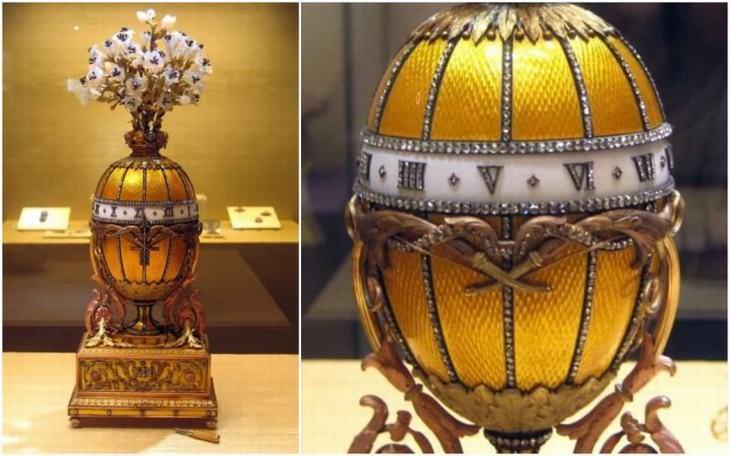
Easter of 1885 marked a day of great significance for the Russian royal family because it marked the 20th anniversary of Tsar Alexander III and Tsarina Maria Feodorovna's engagement. As this was a special occasion it needed to be marked in a special way. So, Tsar Alexander III placed an order for an egg from Fabergé as an Easter present to his wife.
At a glance, the gift seemed to simply be a decorative piece, though it had a hidden surprise. Inside, there was a golden yolk, and in the yolk, a plump golden hen. Inside the hen, a diamond-set crown, and a tiny ruby pendant.
As one would expect, his wife to be Maria Feodorovna loved the gift, so much so that Tsar decided to turn this into a yearly tradition, which was taken quite seriously by the royal family in the following years. The Tsar's successor, Nicholas II, followed the tradition presenting eggs to both his mother, Maria Feodorovna and his wife, Empress Alexandra Feodorovna each year.
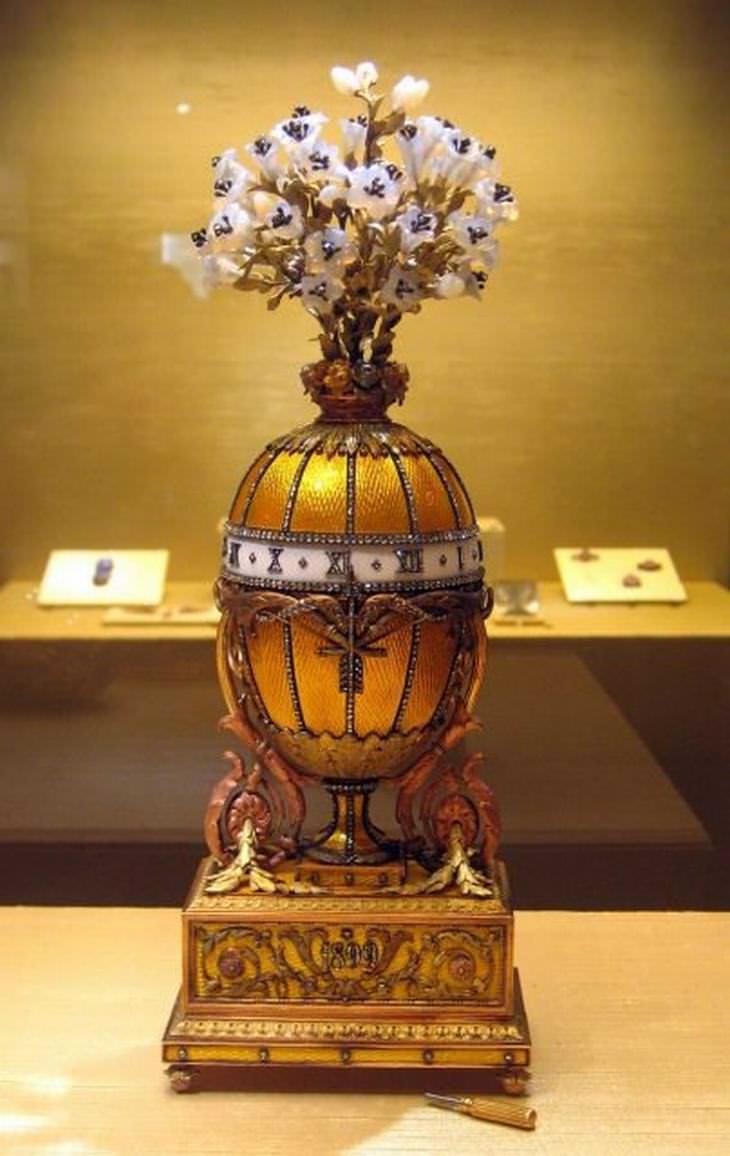
Consequently, around 50 Easter eggs were made for the imperial family between 1885 and 1917, only 42 of which have survived. Each of the eggs is unique in its own way, having an original design and containing a different hidden surprise. One such egg is the Bouquet of Lilies Clock Egg, which is also known as the Madonna Lily Egg.
This egg was presented by Tsar Nicholas II to his wife for Easter in 1899 and is among the largest of all Fabergé eggs ever produced. Michael Perkhin worked on this particular egg under the supervision of Peter Carl Fabergé himself. It is clear to see that he was inspired by the design of French Louis XVI-era clocks and what makes his creation unique is that he cleverly used the egg as a face of the clock.
He also made good use of the symbolic language of flowers, combining roses - symbols of romance, love, beauty, and perfection, and white lilies, symbolizing the Virgin Mary's purity and innocence with burning torches that ultimately emphasized the significance of family love.
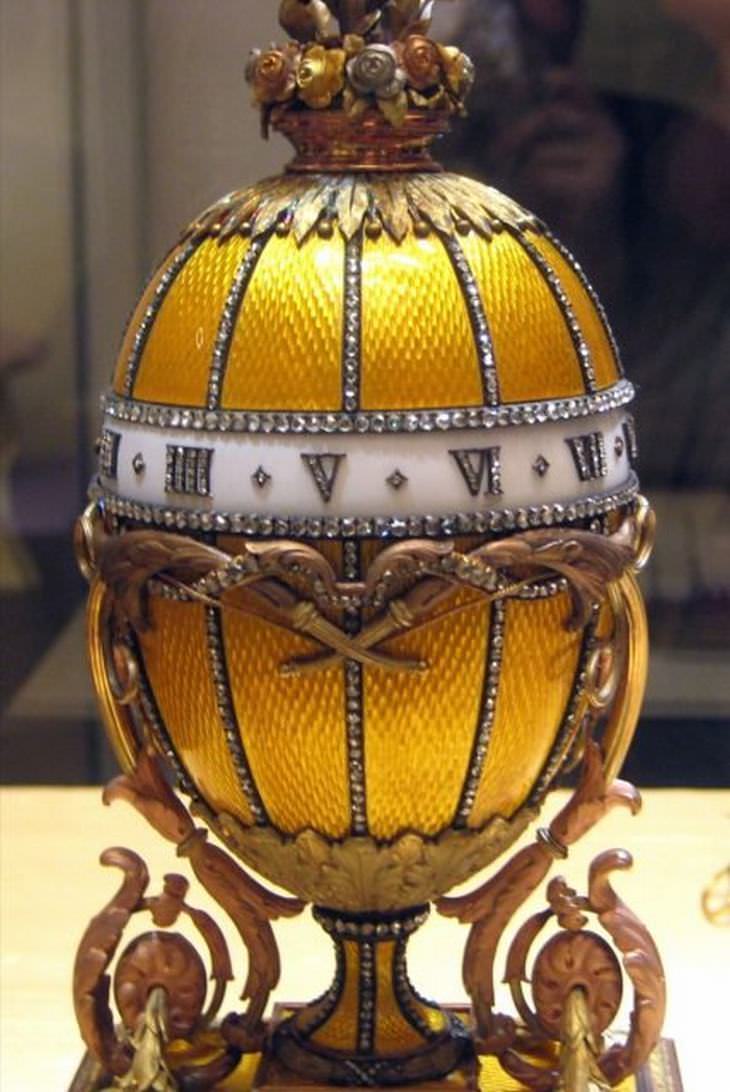
In 1917, two eggs that were planned for gifts during Easter were never delivered because of the Russian Revolution and the royal family being overthrown. Nicholas, Alexander and their children were all killed.
Today, this extraordinary egg, along with nine more Fabergé eggs reside in the Kremlin Armory Museum in Moscow, one of the oldest museums in Russia. Many of the other imperial Easter Eggs can be seen at various museums throughout the country, some are also housed in museums in the United States.
In 2004, nine of these eggs were purchased by oil and gas tycoon Viktor Vekselberg, for around $100 million. And his collection can be seen at the Fabergé Museum located in the Shuvalov Palace in St. Petersburg.
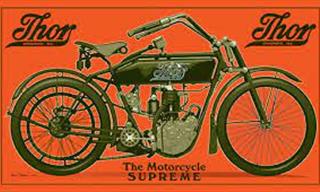
This is The OLDEST American Motorcycle Company
Of these 10 motorcycle manufacturers, only 2 are operating today. Can you guess the two?
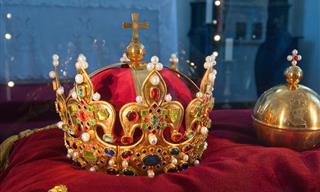
The Rise and Fall of the Tudors: A Royal History
Looking at key events in the history of the Tudor Royal family, where they came from, how they rose to power, and what caused their decline.
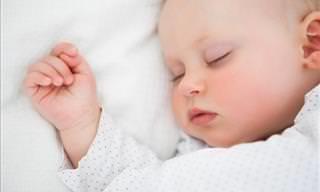
This Guide Will Help Your Baby Sleep All Night Long
Is your baby having trouble sleeping through the night? These tips will help.
 15:12
15:12
Nostalgia - '70s Teenagers Recalling the Good Times
These groovy 70's teenagers, now proud parents and grandparents, sit for a chat with their younger relatives to compare adolescence now and then.

Can You Guess the Meaning of These 20 Common Surnames?
We kind of take surnames for granted, as they are just passed down to us. But every name has an origin and meaning, and some might surprise you.
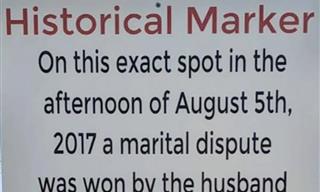
Husbands Have Their Own Sense of Humor...
Check out these 12 examples of husbands and boyfriends being absolutely hilarious.
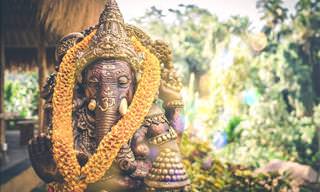
The Surprising Link Between English and Sanskrit
Sanskrit is an ancient Indian language, but most people don't know that this archaic language and English have a common ancestor
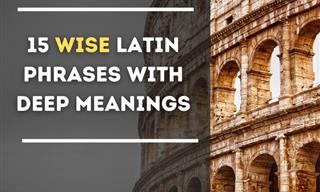
These Latin Phrases Will Make You Think About Life
Take note of these beautiful and wise Latin phrases and understand their deep meanings.

A Few Things We Bet You Never Knew About the USA!
The USA is an enormous and diverse place, but when you look at it from a numerical point of view, things get even more curious. Take a look.
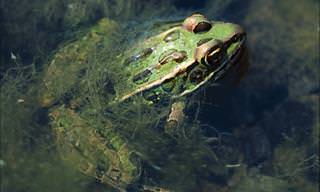
Be Prepared! These Facts About the World Are Pretty Scary
These facts are incredibly fascinating... but they've got an element of spookiness to them too!

Love is Beautifully Captured in These Historic Photos...
While much has changed over the last century, there is one thing that has always remained the same, and that is love. Take a look at this photo collection.

Travel Back in Time With These Rare Moments From History...
Some photos date as far back as to the early 20th Century, with a few prototype designs that would eventually pave the way for the technology we use today. Take a stroll down memory lane with these Rare moments.

The Truth Behind These Animal Myths Will Shock You
Here are a list of facts about animals we thought to be true.
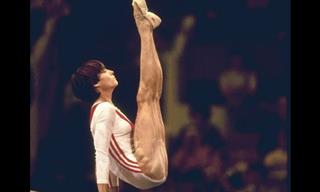
12 Freaky Photos of Olympians That Will Shock You
These surreal pictures of Olympians will make you see athletes in a different light.
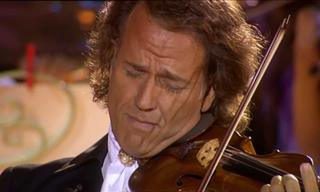 3:30
3:30
Andre Rieu's Haunting Performance: The Godfather Theme
Andre Rieu's haunting rendition of the Godfather theme will leave you speechless.

13 Quirky Vintage Inventions That Should Be Brought Back
Check out these cool and quirky vintage inventions that could be useful to many of us today!

How Are Men and Women Different? A Few Good Examples
In this series of funny but true pictures, we get a quick tour of some of the major differences between men and women...

10 Things You Didn't Know Were Invented By Native Americans
Learn about some super useful inventions that the Native Americans contributed to the world.
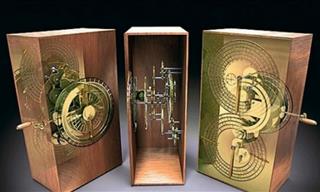
These 6 Mysterious Objects Can't Be Explained by Anyone
Archaeology is a very rewarding discipline, but there are some mysteries that never get solved. Take these 6 ancient objects. What they are is anyone's guess!
 19:08
19:08
What People Need When the End Is Nigh: A Profound Talk
BJ Miller is a palliative care physician with some amazing insights. Discussing what happens to our thoughts as we pass away, he shares some profound thoughts.
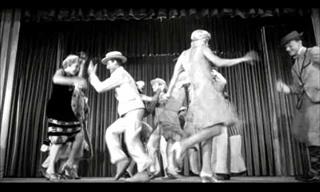 2:55
2:55
Dance Styles in the 1920 Were So Much FUN!
Enjoy this delightful clip from the movie ‘Don't Knock the Rock’, which shows some groove dance moves from the 1920s.
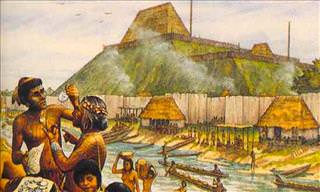
These Ancient Stories Were Lost to the Sands of Time
Even some of the world's greatest stories can be forgotten due to the passage of time. After much digging, we rounded up 10 of the best. Read on!
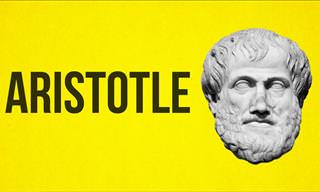
INTERACTIVE: The Musings of Philosophers Through the Ages
The great thinkers have imbued the world with greater knowledge and different perspectives. Learn about what the wisest men in history had to say.
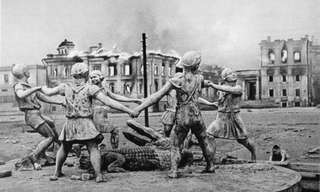
These Photos Make Sure We Will Never Forget WW2
These photos document some of the moments of this epic yet haunting time in our history. I hope that future generations will not forget the lessons that war has taught us.

This Beautiful Story has a Special Moral to Teach
This is a beautiful story of a woman who looks after four turtles. It has a wonderful moral at the end too. Enjoy!

These 10 Documentaries Are a Must for Curious Minds
You can’t miss these thought-provoking documentaries.

WW2 Changed These Places Greatly. How Do They Look Now?
Incredible! This is how the war has changed these places.

8 Hilarious Malapropisms by Famous Figures
Everyone, from politicians to celebrities, had a language slip-up at least once...
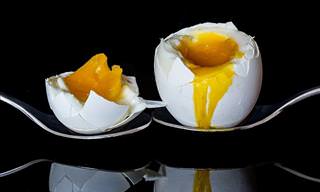
What Does the Color of an Egg Yolk Mean? Find Out Here!
Ever wondered what the color of an egg yolk says about the quality of the egg? If so, then wonder no more...
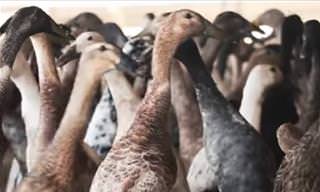 0:51
0:51
Have You Ever Seen Ducks With Jobs? You're About To!
Watch the day-to-day life of these incredible ducks, who just so happen to spend their lives on a wine farm...
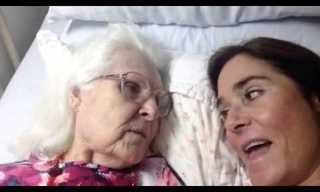 1:37
1:37
Her Mom With Alzheimer's Didn't Recognize Her, Until...
A loving daughter experiences a moment she thought she'd never have again.

Amazing History: The Man Who Took Down a Plane With a Gun
Owen Baggett is the only man ever to live known to have shot down a fighter plane using nothing but a handgun. Read his incredible story right here.
 8:07
8:07
Which of These Old Bathroom Features Do You Want Back?
These old bathroom trends have disappeared over time.
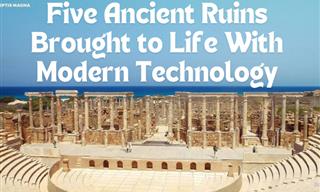
5 Ancient Ruins Brought to Life Again With Modern Tech
Take a look at the digital remakes of five important world heritage sites and also learn about their fascinating history.

These Female Celebs Have Aged Like Fine Wine (28 Pics)
These female celebrities are aging just like fine wine.
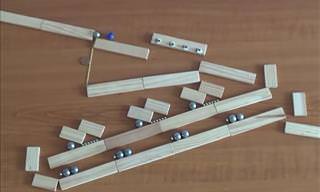 4:05
4:05
This Amazing Maze Has Taken the Internet By Storm!
Watch this intriguing video which features a maze of marbles and magnets.

10 Richest People From History You Should Know About
A look at 10 of the richest people that lived in history. From emperor Mansa Musa to Muammar Gaddafi, it presents the insane sums these people had.

12 Beautiful Plants That Will Transform Your Windows
Brighten your home with these gorgeous window plants.
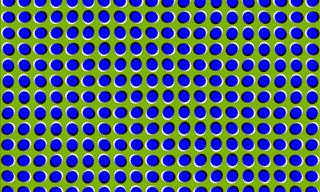
Get Lost in These 15 Surreal Optical Illusions!
After looking at these weird optical illusions you might never trust your eyes again.

10 Unmissable Historical Fiction Novels You Must Read
If you’re a fan of history, then these books have to be on your to-read list.
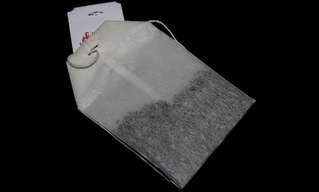 2:04
2:04
Don’t Throw Away Your Used Teabags Just Yet
Teabags aren’t only for making delicious cups of teas. Find out what other uses they hold in this helpful video.
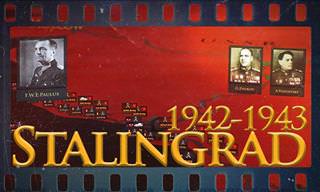 13:08
13:08
The Epic Battle of Stalingrad Comes to Life
One of the most epic battles in history, and the biggest of WWII comes to life and explored in this in-depth video.
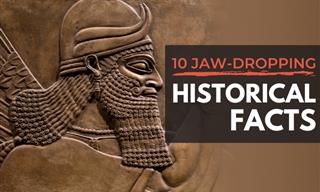
10 Jaw-Dropping History Facts We Never Knew Were True...
These little-known historical facts and stories show us just how little we all know about life’s mysteries and history’s twists and turns.
 3:22
3:22
This Hilarious Song Perfectly Sums Up My "Efficient" Memory
This hilarious song perfectly sums up or senior moments.
 5:54
5:54
She Will Never Forget Her Marriage Proposal. Ever.
This is a Marriage Proposal For the Books...

7 Must-Read Books That Will Get You Interested in History
These interesting history books will make you look at our world and our past from a different perspective.

19 Funny Old English Phrases We Should Really Bring Back!
It's high time that these words make a comeback.


